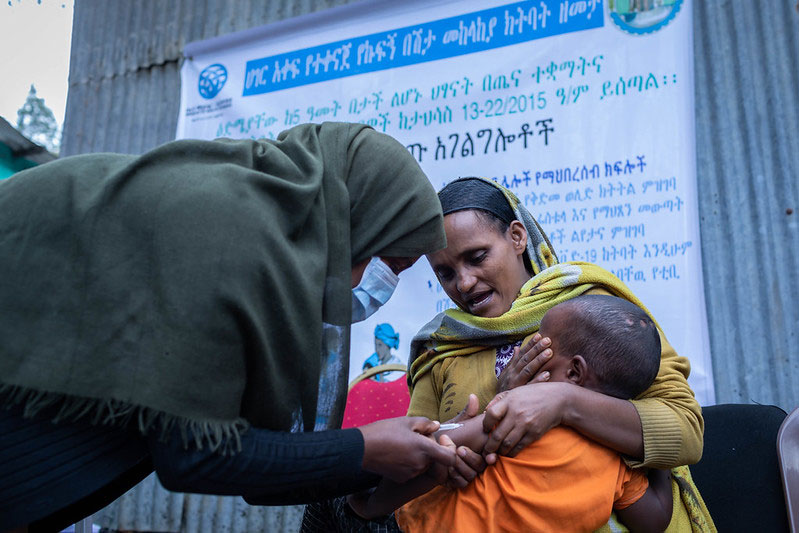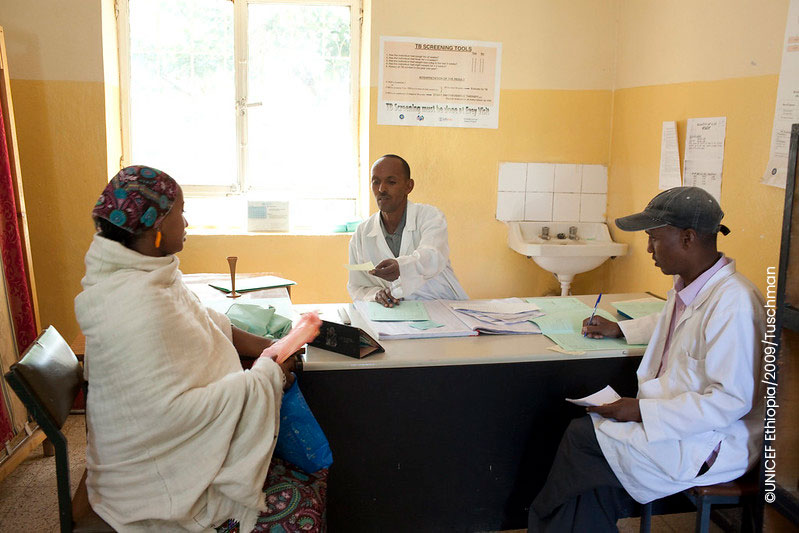Community engagement is central to building acceptance of vaccines, according to the Immunization Agenda 2030. In high-level documents, community engagement is often presented on a tiered spectrum in which the community is increasingly empowered to identify needs and to make decisions on the issues that affect them. However, in practice, community engagement in health interventions is predominantly driven by professionals who have already identified a need. In such cases, the community is then engaged to improve the alignment of the intervention to a community’s needs and preferences, thereby improving its acceptability, appropriateness, and effectiveness. This dissonance between the conceptual model, which is widely recognized, and the one implemented in practice has implications not only for the design of interventions but also their evaluation and evidence synthesis.
In our newly-released systematic review on routine child immunization, we developed a community engagement typology to bridge this gap between theory and practice. We came across three ways communities had been engaged: engagement in the design of the intervention, engagement in the implementation of the intervention, or engagement embedded as a component in the intervention.
The systematic review synthesizes evidence on the effectiveness of community engagement interventions for improving routine child immunization outcomes in low- and middle-income countries (L&MICs). It found that in general, such interventions increase vaccination coverage and timeliness.
For this review we had originally planned to categorize the community engagement interventions according to the widely-known hierarchical spectrum of engagement developed by International Association of Public Participation (IAP2). This spectrum has five levels: inform, consult, involve, collaborate and empower, corresponding to increasing influence of the community over the decisions that influence their lives. In this spectrum, described as the “social justice perspective” in Brunton et al. (2017), the motivation for community engagement is ethical, socially desirable and equitable. We pilot-tested the IAP2 spectrum on a range of community engagement interventions that have been evaluated in real-world settings in L&MICs and found it did not fit. Rather, most interventions had what Brunton et al (2017) called the “utilitarian perspective":
‘’Interventions that are based on a utilitarian perspective seek to involve communities in order to improve the effectiveness of the intervention. The intervention itself may be decided upon before the community is invited for its views; or, while the intervention itself is not designed by community members they may be involved in other ways, such as priority setting, or in its delivery. In utilitarian perspectives, health (and other) services reach out to engage particular communities that they have identified require assistance and the intervention is devised within existing policy, practice, and resource frameworks.”
After several pilots, we ultimately settled on a community engagement typology that focused on when and how the community is engaged rather than its intensity. We found it hard to assess the intensity of community engagement even for the interventions rooted in the “social justice” perspective because of their limited description in primary studies. Our typology closely corresponds to the “extent of engagement” part of the conceptual framework developed in Brunton et al. (2017). It also captures the spirit of desirable two-way communication and autonomous decision-making of the IAP2 framework. It has three categories:
Engagement in design: In the interventions in which the community was engaged in the design, their input or feedback was sought before the implementation of an intervention. The feedback was taken in a variety of ways but mostly through stakeholder consultation or formative evaluation. In some interventions, a pilot was also conducted. Depending on the nature, frequency, and weight of the community feedback in decision making, these engagement activities can align to any of the IAP2 levels other than inform.
Engagement in implementation: In many interventions, the community was not asked for input in their design, but participated in their implementation as health care workers, facilitators, or problem solvers. In the spirit of the IAP2 framework to go beyond one-way communication, we only included those interventions where the community members involved in their implementation had some opportunity to influence it. This broadly aligns with the IAP2 levels ‘involve’ and above. The interventions under this category typically involved an existing community-led governance structure weighing in on implementation decisions or the community contributing essential resources.
Embedded engagement: In the interventions in which engagement was embedded, a serious attempt was made to gain community buy-in for activities or new cadres of community-based structures were established, such as village health committees or community health volunteers. In most cases, the development of new community-based cadres resulted in two-way communication. The embedded community-based structures encouraged and enabled the communities to take more ownership of service delivery and provide local solutions to local problems.
We found the above approach of categorizing community engagement interventions relatively easier to apply, less subjective, less prone to classification error and potentially useful to practitioners. Our experience has led us to several recommendations for the community of practice:
- We need to understand better the different ways in which communities have been engaged for improving health in real-world settings in L&MICs
- We need to understand and acknowledge the motivation and rationale for engagement of community in the health interventions in L&MICs. This understanding is important not only for ethical and political reasons, but also for grounding the theories of change underpinning the interventions and identifying the primary outcomes of interest. For example, for community engagement interventions motivated by social justice, empowerment itself is an important outcome of interest to be considered, evaluated, and synthesized
- The dominance of community engagement interventions with the ‘’utilitarian perspective’’ could reflect their feasibility and/or appropriateness in their contexts. However, the rationale for the prevalence of these interventions needs to be examined carefully to glean lessons on the design and implementation of future interventions planning to engage communities for improving health outcomes
- Journal articles and reports which describe interventions typically do not allow for easy and systematic assessment of the intensity of community engagement because they lack details about whether the community was informed, consulted, collaborated or led the intervention. Reporting guidelines are needed for community engagement interventions for health to enable this assessment








